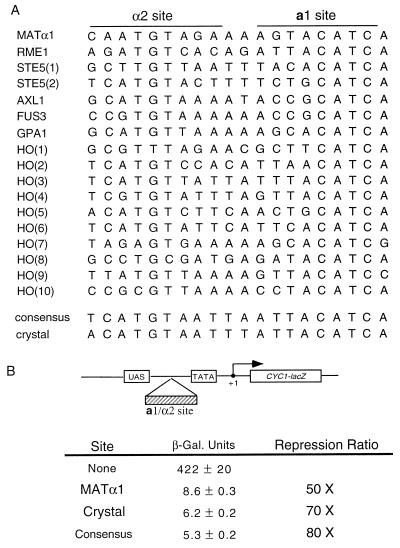FIG. 1.
A comparison of naturally occurring and synthetic a1-α2 binding haploid-specific gene operators. (A) Sequence alignment of 17 naturally occurring a1-α2 binding sites located upstream of haploid-specific genes and the synthetic a1-α2 binding sites used in the ternary crystal complex (27) and in this study. DNA sequences are written from 5′ to 3′ (left to right). (B) Comparison of the repression by naturally occurring and synthetic a1-α2 binding sites. Transcription reporter constructs that contain a1-α2 binding sites in the promoter region of the CYC1-lacZ fusion were transformed into a diploid strain for β-galactosidase assays. The fold (×) repression was calculated by comparing the β-galactosidase (β-Gal.) activities from strains that carry a plasmid containing the a1-α2 site with the activity of a plasmid without the a1-α2 site. The levels of repression are shown for a natural site found in the MATα1 promoter, the synthetic site used to determine the crystal structure of the ternary complex (27), and a partially symmetric synthetic consensus site that we have used as our standard.

